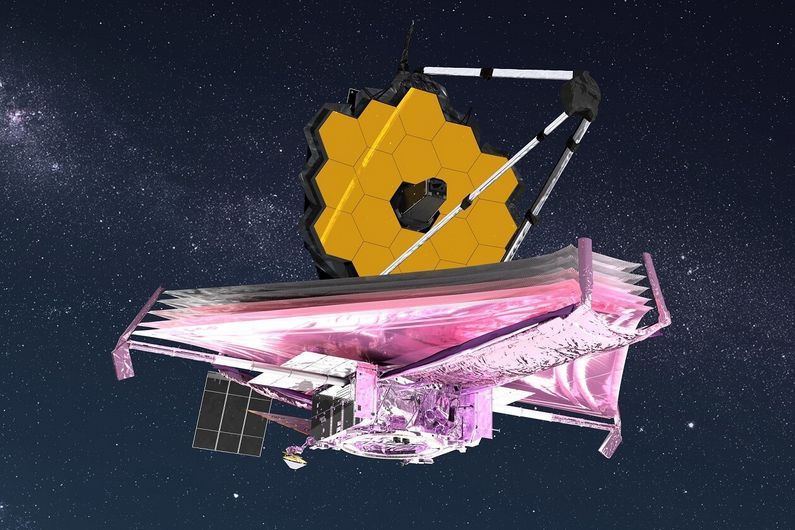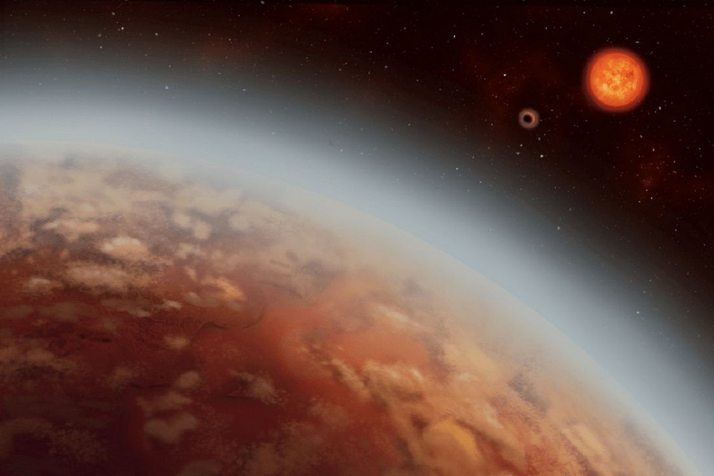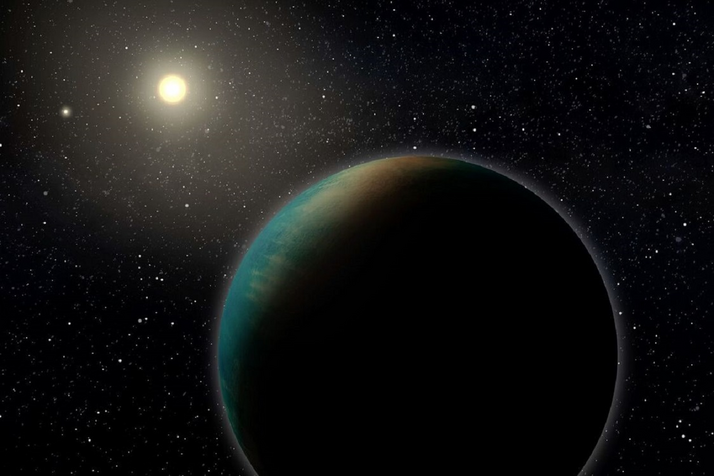iREx making major contribution to astronomy
- UdeMNouvelles
11/21/2022
- Béatrice St-Cyr-Leroux
A look back at some of the important discoveries made by members of UdeM’s Institute for Research on Exoplanets since its creation.
In 1995, a Swiss team discovered the first exoplanet orbiting a Sun-like star. Then, in 2008, a team headed by René Doyon, professor in the Department of Physics at the University of Montreal, made a splash world-wide by publishing the first direct image of an exoplanet system, named HR 8799. The discovery was led by two of Doyon’s former students, David Lafrenière, now a professor in the Department of Physics at UdeM, and Christian Marois.
That world’s first, the fruit of a decade of research by Doyon’s team, helped catalyze the development of Quebec expertise in exoplanets. A few years later, in 2014, the University of Montreal’s Institute for Research on Exoplanets (iREx) was born.
Today, iREx has 60 researchers—plus summer interns—working to find life elsewhere in the universe and discover new worlds beyond our solar system.
A donation from the Trottier Family Foundation at the time of iREx’s creation helped make its mission possible. This week, the Foundation doubled down on its support with a second $10 million donation to extend iREx’s work into the future.
Here is an overview of three of the iREx projects that have been supported by the donations.
Water detection
In 2019, an international study led by iREx astronomer and UdeM professor Björn Benneke detected water vapour in the atmosphere of the exoplanet K2-18b, which is located in the habitable zone of the star it orbits.
This was a major discovery in the search for extraterrestrial life, the first time that researchers had detected water on an exoplanet in its star’s habitable zone, where water can exist in its liquid state.
Through observation and modeling of the planet’s climate, the astronomers determined that it could have a hydrological cycle in which water condenses into clouds and falls as rain.
While scientists believe that K2-18b’s thick gaseous envelope would probably prevent the existence of life as we know it on the planet’s surface, this was one step closer to detecting signs of life beyond our solar system.
Ocean planet
In the summer of 2022, an international research team led by Charles Cadieux, a doctoral student at UdeM and iREx, announced the discovery of TOI-1452 b, an exoplanet considered a candidate “ocean planet” because it may be covered by a thick layer of water.
TOI-1452 b is slightly greater in size and mass than Earth and is located at a distance from its star where its temperature would be neither too hot nor too cold for liquid water to be present on its surface.
It is probably rocky like Earth but its radius, mass and density suggest a very different, much more watery world than our own.
This unique exoplanet was revealed to the public by observations at the Observatoire du Mont-Mégantic (OMM) and the Canada-France-Hawaii (CFH) Observatory. They used the CFH’s SPIRou instrument, designed and built in part at the OMM’s experimental astrophysics lab, and an innovative analysis method developed by iREx research staff.
Telescopic possibilities
The work done at iREx in recent years cannot be discussed without mentioning its research teams’ contribution to the famous James-Webb telescope, which was launched in December 2021 and is now stationed 1.5 million km from Earth.
This technological marvel, the most complex, accurate and powerful space observatory ever built, is the product of the combined scientific prowess of NASA, the European Space Agency (ESA) and the Canadian Space Agency (CSA)—and by extension, the University of Montreal, since iREx director Doyon is the principal investigator on the CSA’s scientific team.
Doyon and his team provided two core components for the James Webb: a fine guidance sensor to target and focus on objects of interest, and an imager and spectrograph capable of studying exoplanets and distant galaxies in the near-infrared spectrum.
With its unique capabilities, the spectrograph can detect the most distant and oldest objects in the Universe, as demonstrated by the first images from the James Webb, released this summer..
The Trottier Family Foundation’s second donation will enable iREx to continue exploring the far reaches of the universe in search of life, and making more startling discoveries.












